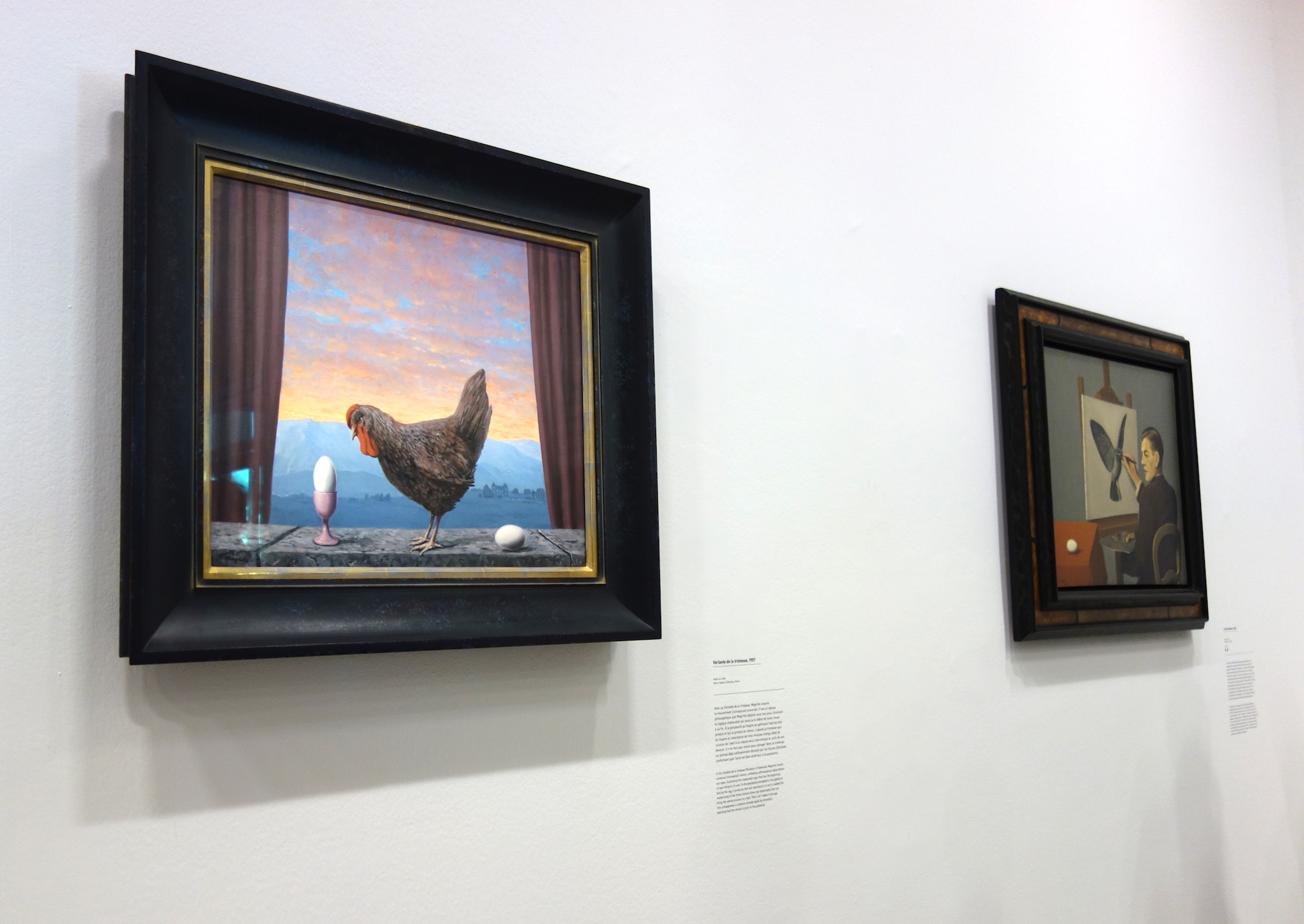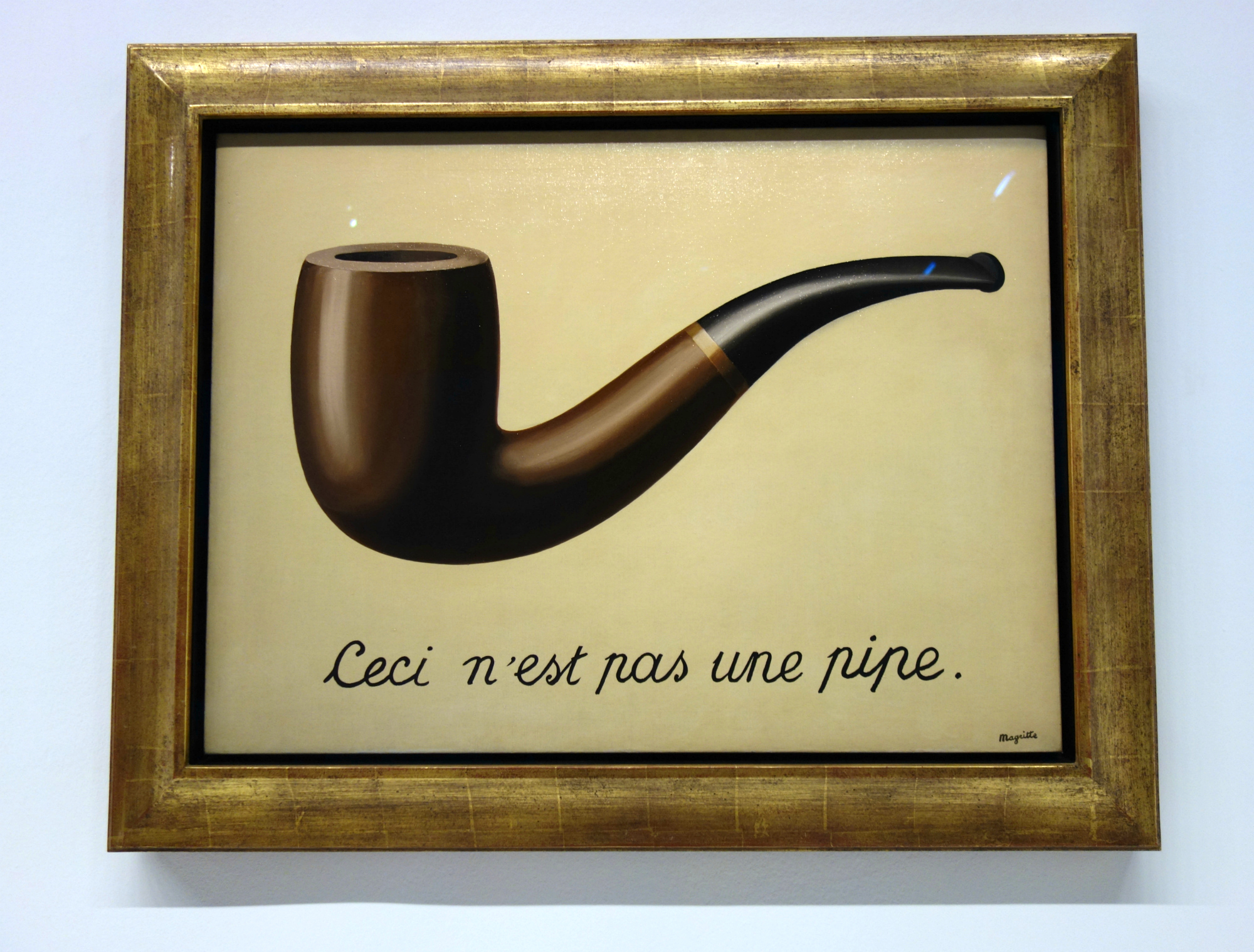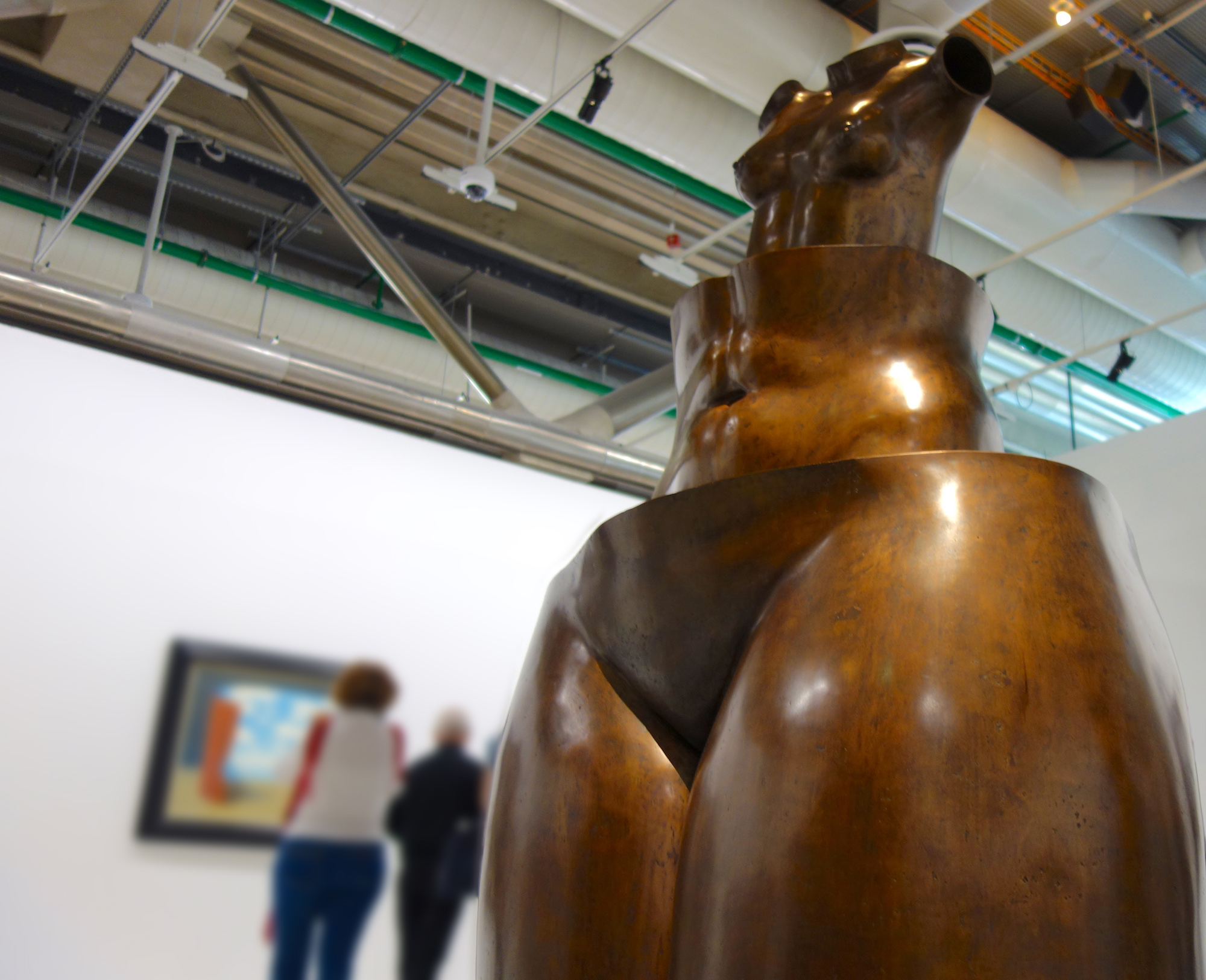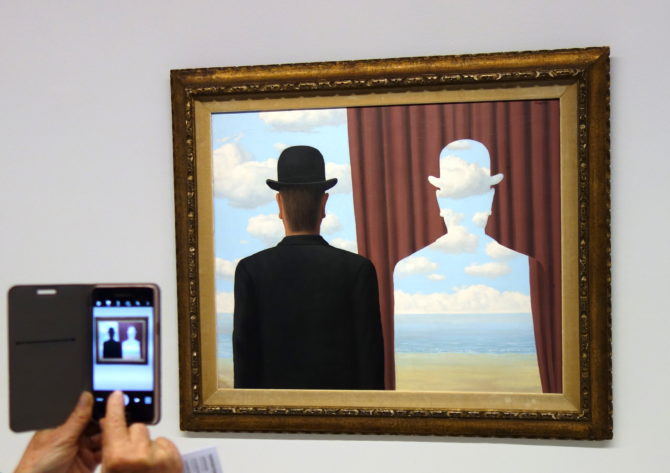The Treachery of Images: Magritte in Paris
Apples, bowler hats, umbrellas, and a famous non-pipe. The comprehensive retrospective of René Magritte’s work at the Centre Pompidou not only immerses us into his puzzling visual code but also into the mind of Magritte the philosopher.
“Magritte engaged in a sort of theoretical battle with philosophers,” said Didier Ottinger, curator of the exhibition, “to prove that pictures can portray thoughts on the same level as words could.”
The exhibition opens with Magritte’s research on ‘problems’, which mark a turning point in his art. In 1936 the artist declared that with Les Affinités Électives, showing an egg inside a cage, he had abandoned the random chance of early Surrealism. This was the first of his paintings intended to solve what he termed a “problem” to which he seeked to find a solution through logical methods. He followed up with problems as diverse as women, chairs, shoes, and rain.

Which came first? Renée Magritte’s “Problems”, view of the exhibition. Photo by Sylvia Davis
Surrealism stood for the liberation of the individual from the domination of the rational, a movement that emerged in part as a rejection of the unbearable reality of to the atrocities of the First World War. In the beginning the exchange was limited mostly to literature and written commentary, with French writer and poet André Breton, a personal friend of Magritte’s, at the fore. Magritte ‘betrayed’ this text-only world by adding images to the mix. I wondered what he would make of people now looking at an image within an image, by way of their smartphones.
The exhibition brings together around one hundred paintings, drawings and documents offering a fresh reading of the body of work. “Magritte: La trahison des images” explores the artist’s interest in philosophy, which culminated in the publication of Foucault’s Ceci n’est pas une pipe (1973), born out of the writers discussions with the artist.

René Magritte, La Trahison des images – Photo by Sylvia Davis
© Adagp, Paris 2016
© Photothèque R. Magritte / Banque d’Images, Adagp, Paris, 2016
Magritte’s endlessly rearranged a series of motifs. A number of his paintings, for example, make reference to Plato’s allegory of the cave. In the parable the prisoners develop an erroneous conception of the world because all they can see is shadows projected on the wall. When a prisoner breaks free and comes back with a description of the outside world, he is met with incredulity. A fitting parable for Magritte’s who consistently challenges visual representation: the curtains illustrating the contest of Zeuxis and Parrhasius; words with the biblical story of the Adoration of the Golden Calf, that counterposes the text of the law to pagan image; flames and enclosed spaces for Plato’s Allegory of the Cave; or shadows in Pliny the Elder’s account of the invention of painting.

View of the exhibition, Renée Magritte, Megalomania, 1967
Photo by Sylvia Davis
We can all agree that the image of a pipe is not a pipe, but what is the point? What does it all mean? When asked this question Magritte would reply that, just as a mystery, the images don’t mean anything, because mystery doesn’t mean anything either, it is unknowable. He constantly questioned conventions, stripping both the word and the image of its literal meaning. He misnamed objects, repeated images, used tromp l’oeil and concealment, and depictions that defied the natural order of things. This constant tension between image and word, ideas and reasoning, makes for an arresting promenade through paradox at the Pompidou.
Magritte. La trahison des images
Until January 23
Centre Pompidou
Galerie 2 Niveau 6
Tel: +33 (0)1 44 78 12 33
Métro Hôtel de Ville, Rambuteau
Open every day 11 am to 9 pm – Closed Tuesday
€14
www.centrepompidou.fr
#Expo Magritte
Share to: Facebook Twitter LinkedIn Email
Leave a reply
Your email address will not be published. Required fields are marked *





